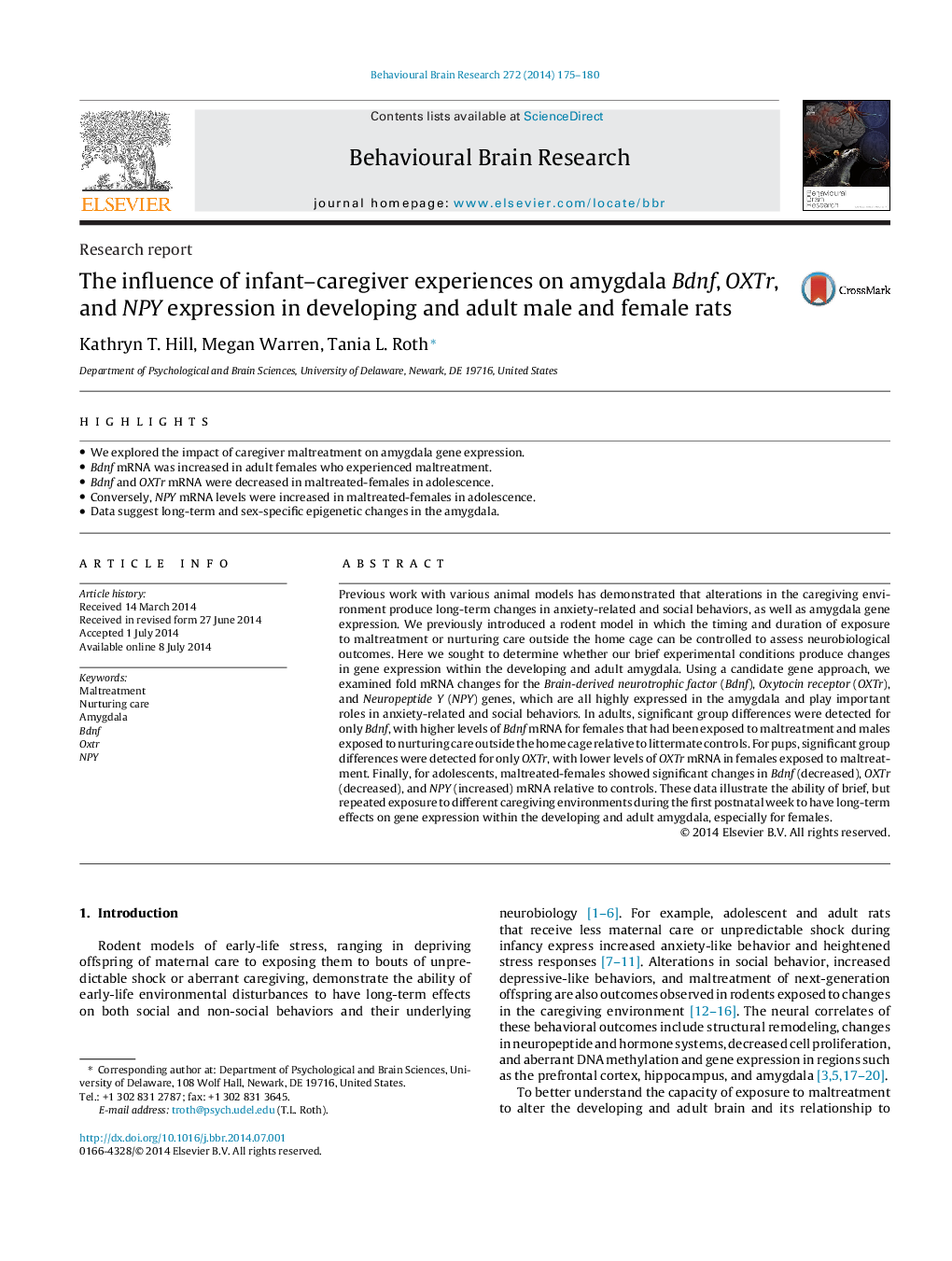| Article ID | Journal | Published Year | Pages | File Type |
|---|---|---|---|---|
| 6257500 | Behavioural Brain Research | 2014 | 6 Pages |
â¢We explored the impact of caregiver maltreatment on amygdala gene expression.â¢Bdnf mRNA was increased in adult females who experienced maltreatment.â¢Bdnf and OXTr mRNA were decreased in maltreated-females in adolescence.â¢Conversely, NPY mRNA levels were increased in maltreated-females in adolescence.â¢Data suggest long-term and sex-specific epigenetic changes in the amygdala.
Previous work with various animal models has demonstrated that alterations in the caregiving environment produce long-term changes in anxiety-related and social behaviors, as well as amygdala gene expression. We previously introduced a rodent model in which the timing and duration of exposure to maltreatment or nurturing care outside the home cage can be controlled to assess neurobiological outcomes. Here we sought to determine whether our brief experimental conditions produce changes in gene expression within the developing and adult amygdala. Using a candidate gene approach, we examined fold mRNA changes for the Brain-derived neurotrophic factor (Bdnf), Oxytocin receptor (OXTr), and Neuropeptide Y (NPY) genes, which are all highly expressed in the amygdala and play important roles in anxiety-related and social behaviors. In adults, significant group differences were detected for only Bdnf, with higher levels of Bdnf mRNA for females that had been exposed to maltreatment and males exposed to nurturing care outside the home cage relative to littermate controls. For pups, significant group differences were detected for only OXTr, with lower levels of OXTr mRNA in females exposed to maltreatment. Finally, for adolescents, maltreated-females showed significant changes in Bdnf (decreased), OXTr (decreased), and NPY (increased) mRNA relative to controls. These data illustrate the ability of brief, but repeated exposure to different caregiving environments during the first postnatal week to have long-term effects on gene expression within the developing and adult amygdala, especially for females.
